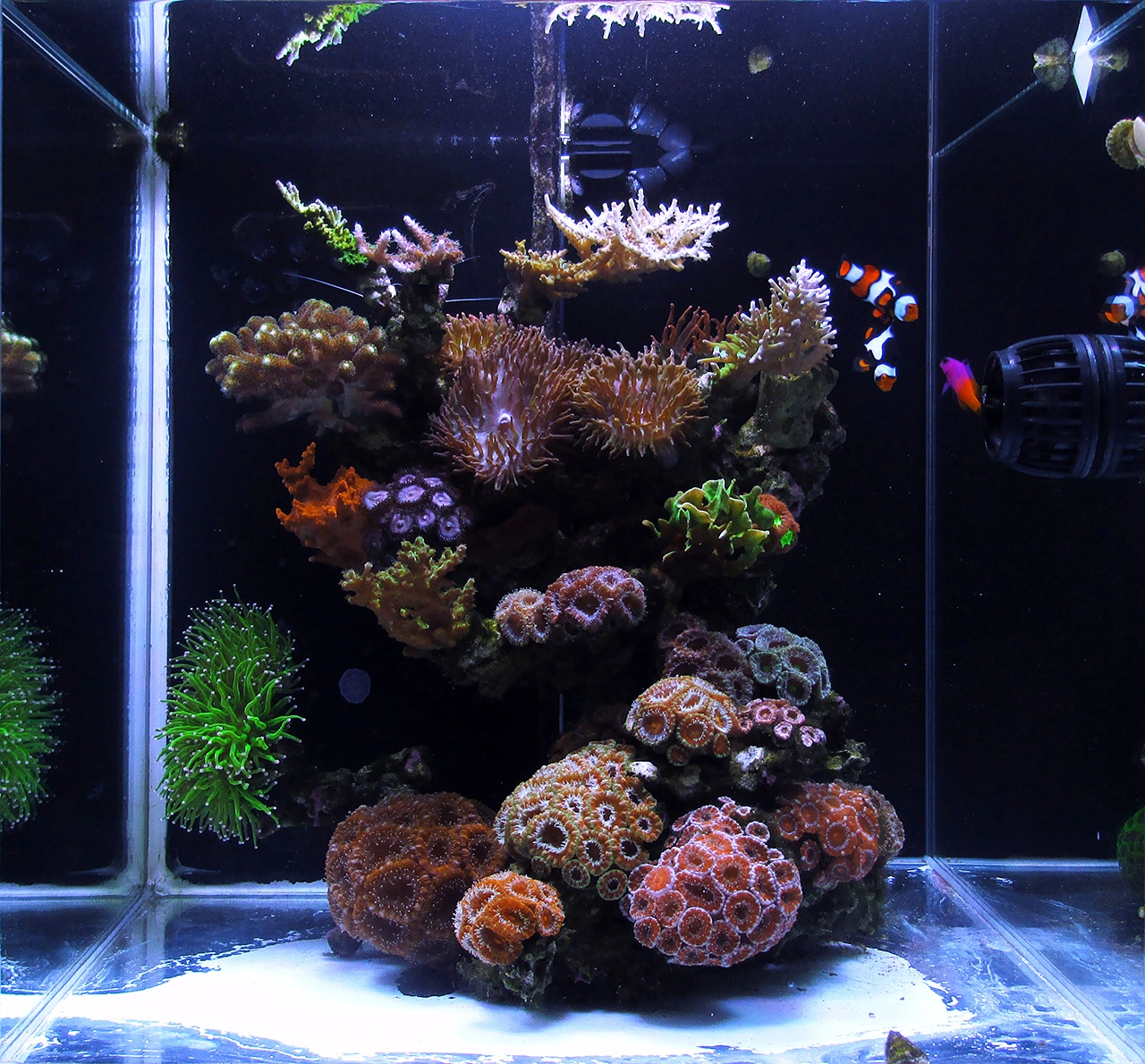Stunning 25-Gallon Reef Tank – Mr. Microscope's TOTM | NanoReef

Tank Specifications
Volume: 25 Gallons / 94 Liters
Dimensions (L × W × H):
18.0" ×
18.0" ×
18.0"
45.7cm ×
45.7cm ×
45.7cm
Equipment List
- Salt: Instant Ocean
Frequently Asked Questions
What is the recommended water change routine for a reef tank?
For a reef tank like Mr. Microscope's, a weekly-ish routine of 5-6 gallon water changes is suggested. This usually translates to changing approximately 20% of the water in a 25-gallon tank to help maintain water quality.
How should I manage feeding my fish and corals?
Feed fish and cleaner shrimp a couple of pinches of pellets every two to three days. Additionally, corals can be fed a combination of Reef Chili and Nutri-Cell about twice a week.
What is the process for top-offs and dosing in a reef tank?
Daily manual top-offs are essential to combat evaporation, using fresh RO/DI water. Dosing of calcium and alkalinity should be done daily, adjusting based on monitoring of the tank's alkaline levels.
How do I change carbon in my reef tank?
Change the carbon once a month to ensure optimal filtration. Regular replacement helps in maintaining water clarity and quality.
What parameters should I monitor in a reef tank?
Keep an eye on tank temperature using a temperature probe. Monitor salinity using a refractometer before water changes, and check alkalinity once or twice a week. For calcium and magnesium, testing is recommended every two months.
How can I control nutrient levels in my reef tank without testing kits?
Rather than relying heavily on test kits for nutrient levels, the evaluation can be based on observation of the reef life and conditions. Adjust feeding and maintenance practices according to the health of corals and presence of algae.
What is the importance of maintaining a good RO/DI system?
Regularly swapping out the filters in your RO/DI system is crucial. The quality of water is directly related to algae outbreaks; therefore, changing DI resin every six months, carbon and sediment filters annually, and RO membranes every two years is essential.
What changes to the salt brand had an impact on tank health?
Switching from Kent Reef Salt to Reef Crystals led to easier maintenance of alkalinity and calcium levels, as well as promoting the growth of coralline algae on rocks.
How should I space my SPS corals when aquascaping?
When placing SPS corals, ensure there is sufficient space between them—at least three to five inches apart. This avoids competition for light and nutrients, allowing for a better growth environment.
What should I consider when introducing invertebrates like cleaner shrimp to the tank?
Invertebrates, such as cleaner shrimp, can enhance the interactions in your tank. Monitor their behavior alongside fishes and plan feeding strategies to accommodate all tank inhabitants.